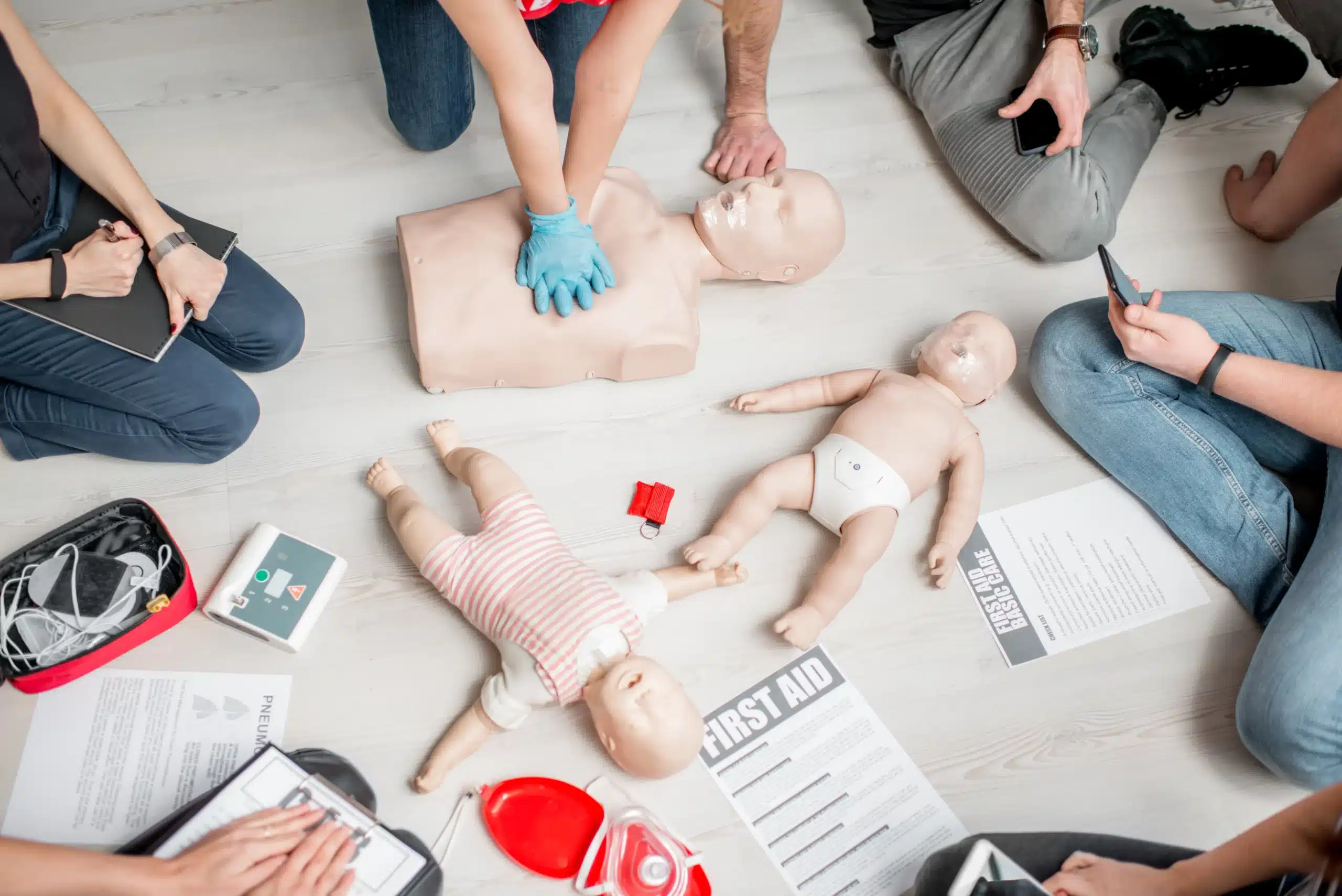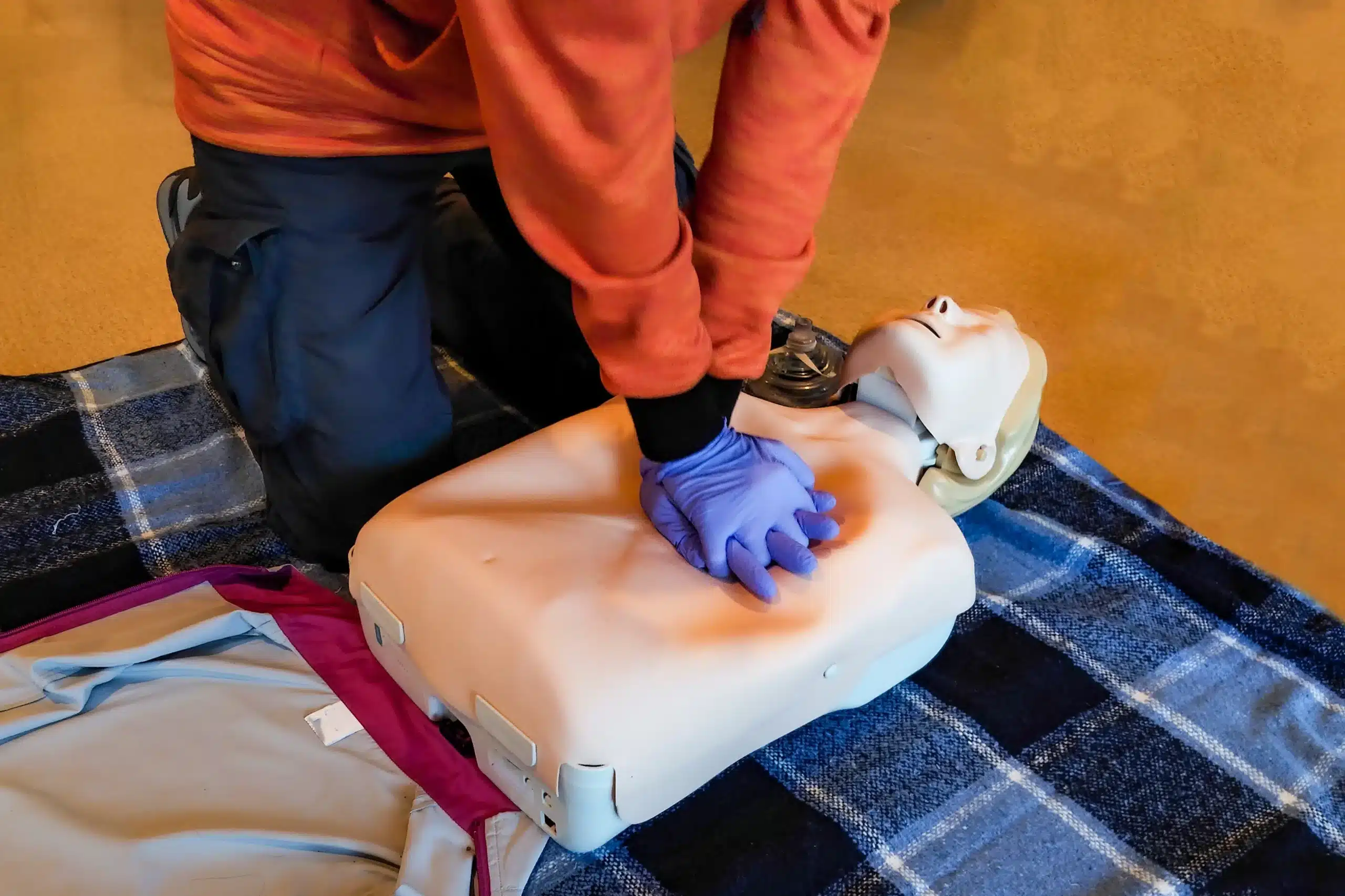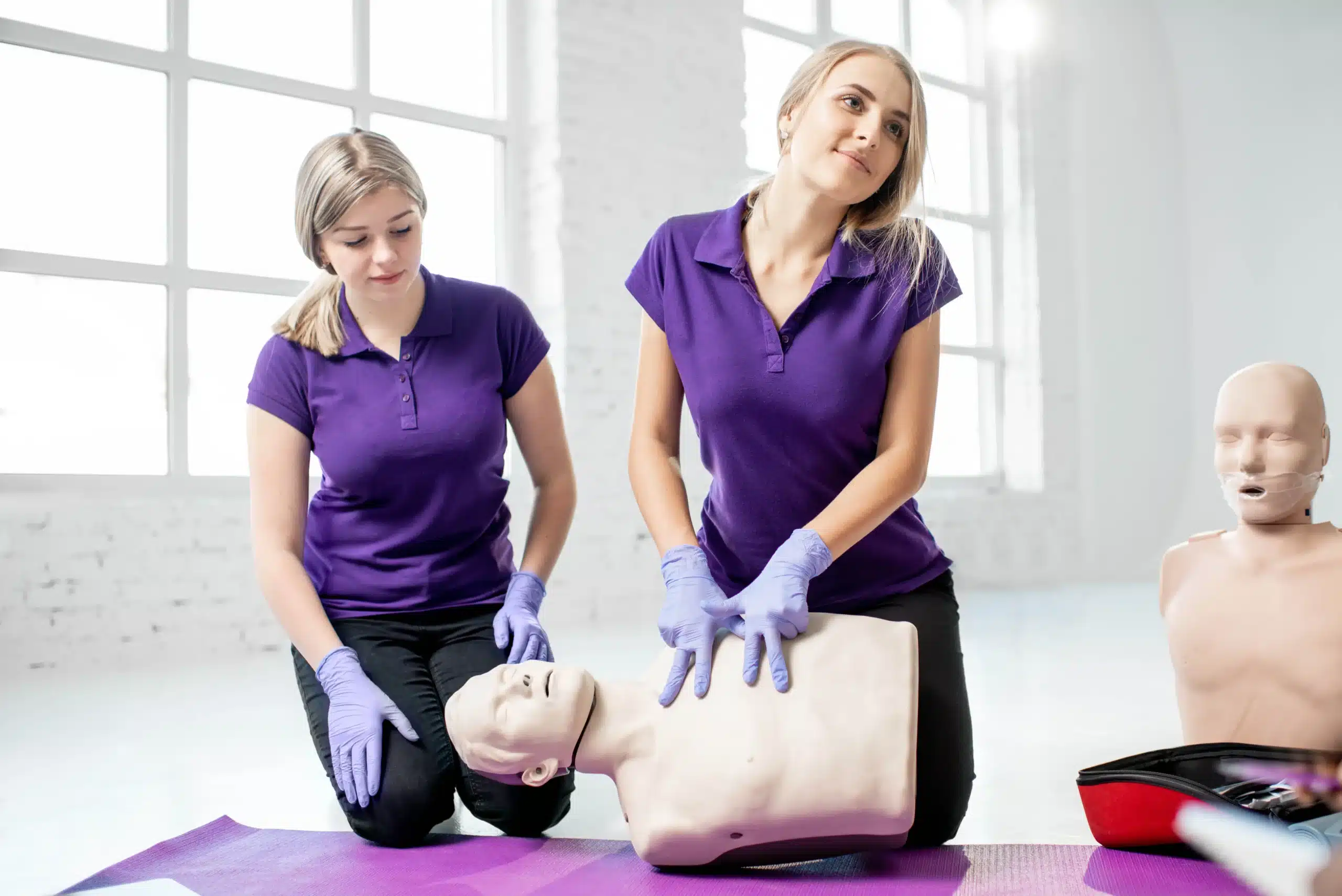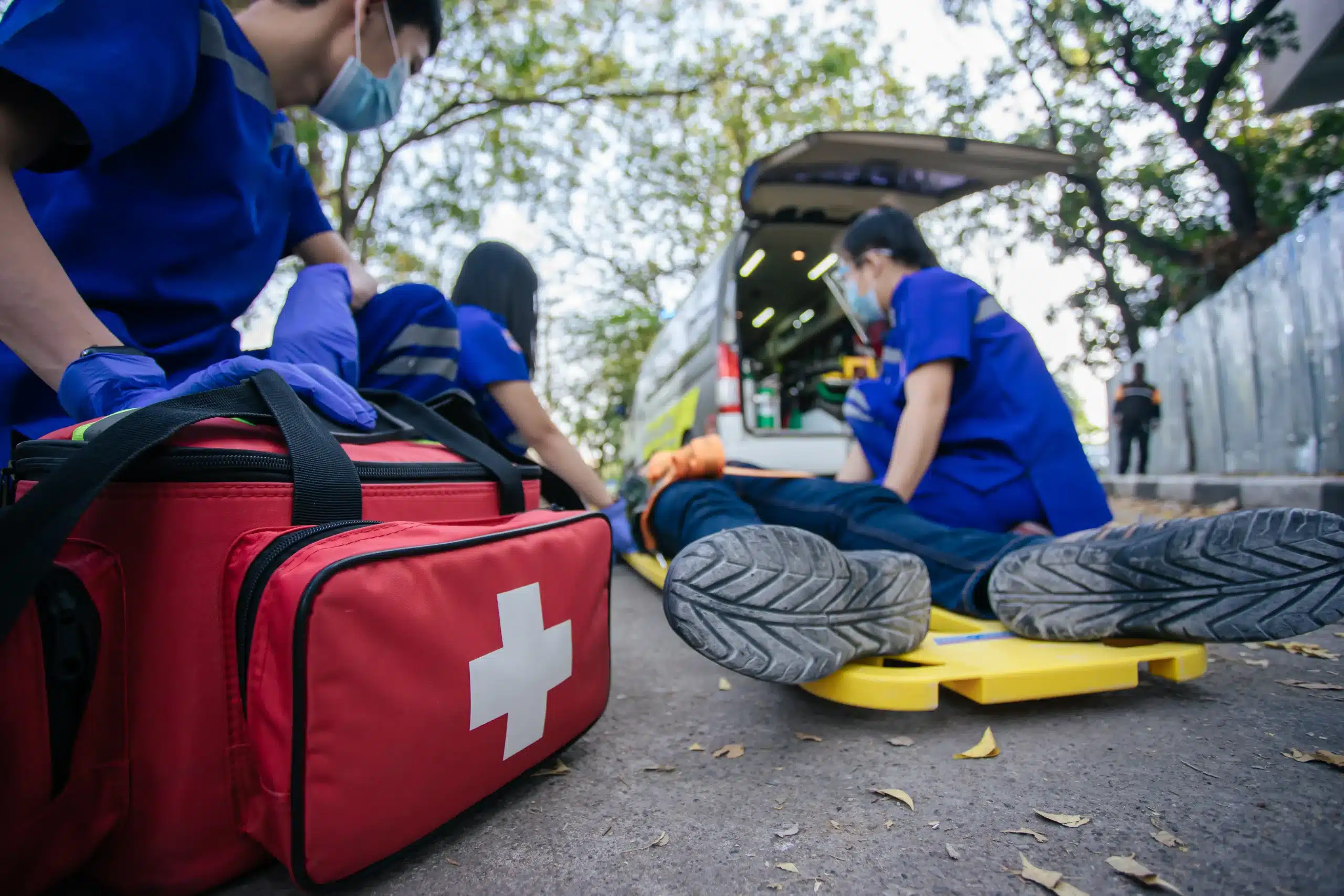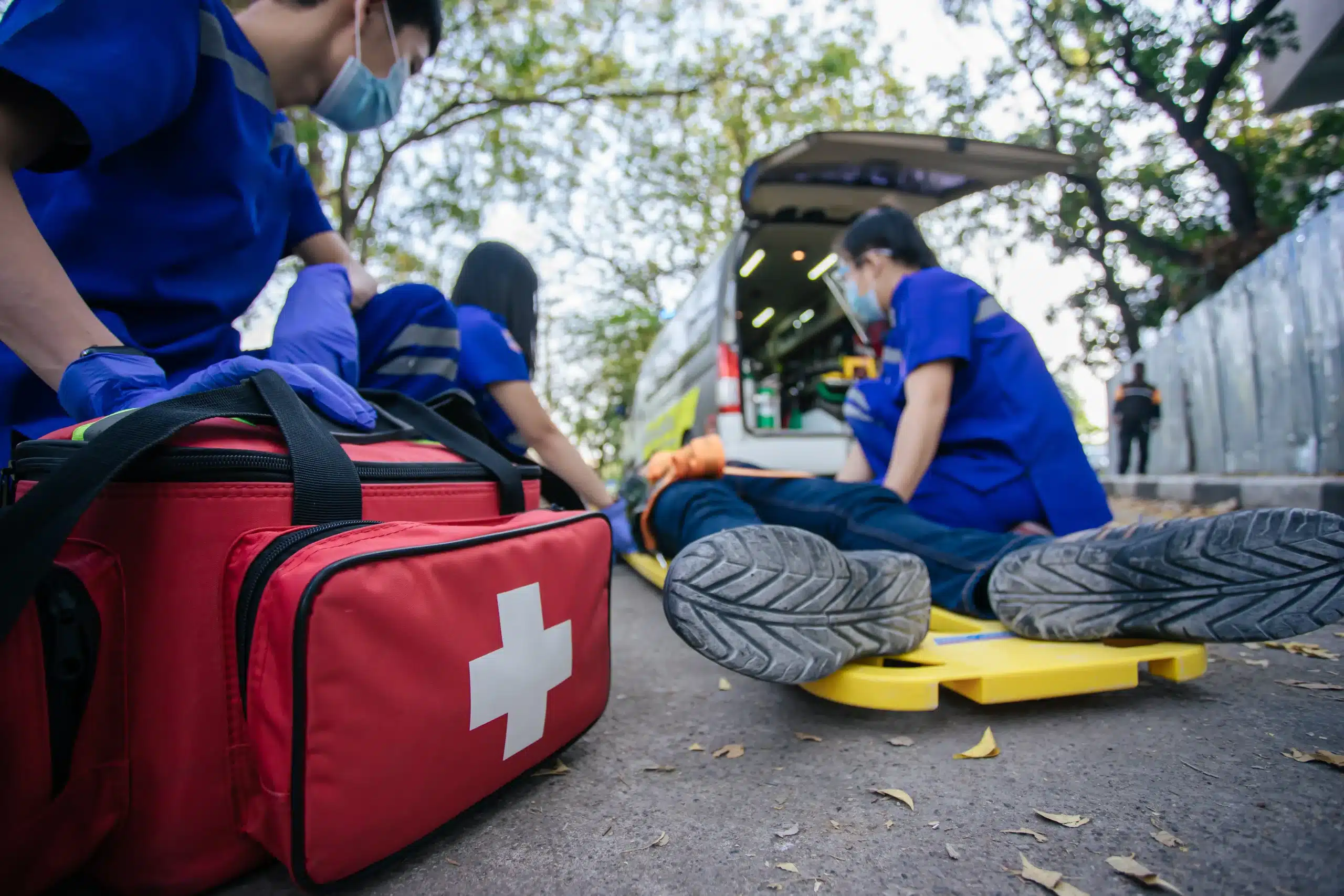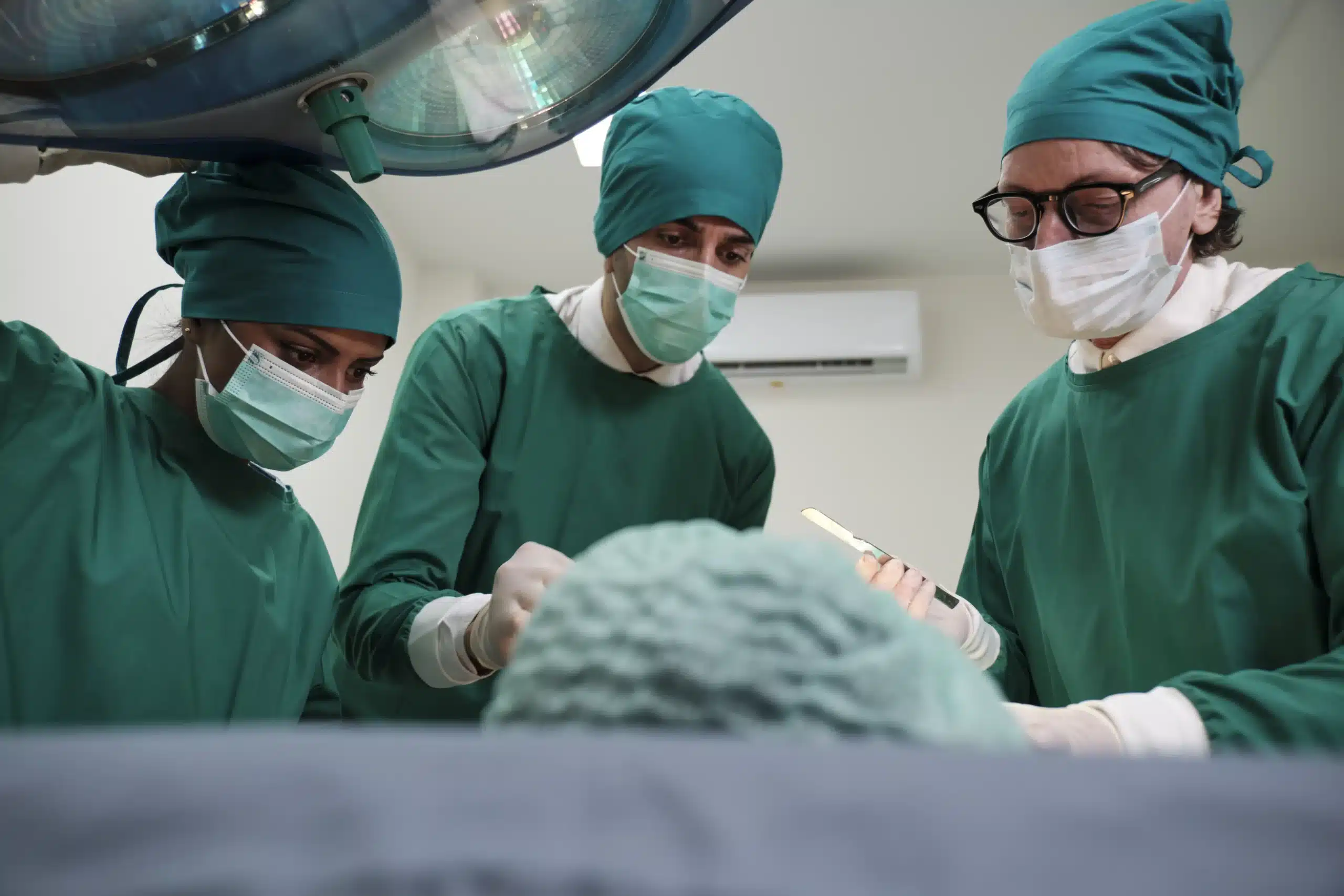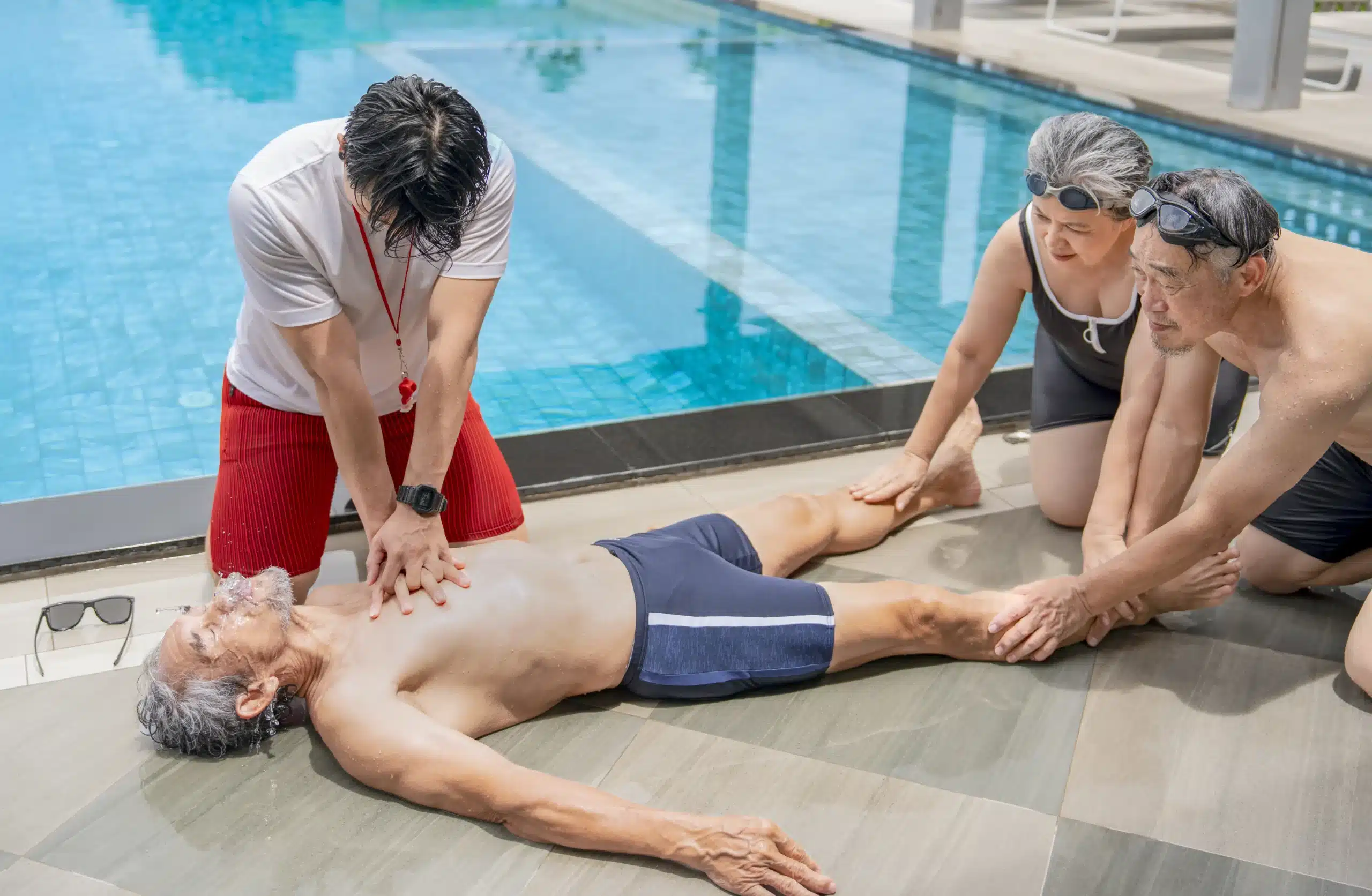Empowering yourself with life-saving skills is one of the most valuable things you can do. Basic Life Support (BLS) provides the knowledge and techniques to respond effectively in medical emergencies, offering crucial care until professional help arrives. This guide is your one-stop resource for understanding BLS, from its core principles to finding “BLS classes near me.” We’ll explore different class formats, discuss the importance of quality training, and provide practical tips to prepare you for your BLS course. Join us as we break down everything you need to know about BLS and how it can empower you to make a difference.
Key Takeaways
- BLS certification provides essential life-saving skills: Learn CPR, AED use, and airway management techniques to confidently respond to medical emergencies. Explore in-person, online, or blended learning formats to find the best fit for you.
- Select a reputable training provider: Prioritize accreditation, experienced instructors, comprehensive course content, and hands-on practice opportunities for a high-quality learning experience.
- Invest in your preparedness with BLS training: Whether for professional requirements or personal growth, BLS equips you with invaluable skills to make a difference in critical situations. Consider cost, schedule, and provider reputation when making your choice.
What is BLS?
BLS Definition and Importance
BLS stands for Basic Life Support. It’s a level of medical care used for victims of life-threatening illnesses or injuries until they can receive full medical care at a hospital. It’s a crucial credential for healthcare professionals, but it’s also valuable for anyone who wants to be prepared for an emergency. BLS training empowers you with the knowledge and skills to respond effectively in such critical situations, emphasizing immediate intervention and high-quality CPR. These seemingly basic actions can significantly impact patient outcomes. Consider taking a BLS course to learn how to save lives during emergencies.
Key BLS Skills and Techniques
BLS certification equips you with essential life-saving skills, increasing your confidence and improving patient outcomes. The skills learned in a BLS course include high-quality CPR for adults, children, and infants; how to use an automated external defibrillator (AED); and airway management techniques. The American Heart Association BLS course covers essential techniques and best practices for various healthcare settings. You’ll learn how to recognize the signs of a heart attack or stroke, provide appropriate chest compressions and rescue breaths, and clear a blocked airway. BLS training also covers the use of AEDs and techniques for assisting someone who is choking. These skills are invaluable in emergencies and can make a real difference.
Find BLS Classes Near You
Finding the right BLS class is easier than you think. Whether you prefer online convenience or hands-on, in-person training, several paths can lead you to the perfect course.
Search Online
Start your search online. Use search engines like Google to look for “BLS classes near me” or “BLS certification in [your city].” This will give you a list of potential training providers in your area. Many training centers have websites with schedules, course descriptions, and online registration, making it easy to compare options and find a class that fits your needs. You can also check online directories specifically designed for CPR and first aid training.
Find Local Training Centers
Reach out to local hospitals, clinics, community centers, and fire departments. Many of these organizations offer BLS classes to their staff and the public. Contacting them directly can provide valuable insights into upcoming courses. For residents of Santa Clara, Milpitas, and San Jose, Santa Clara CPR Classes offers a range of American Heart Association certified courses, including BLS, ACLS, and PALS. Their convenient location, flexible schedules, and Low Price Guarantee make them a reliable option for CPR certification.
Ask Healthcare Professionals
If you work in healthcare, ask your colleagues or supervisors for recommendations. They can likely point you toward reputable training providers or in-house training opportunities. Understanding the principles of BLS is crucial for healthcare providers, as it directly impacts patient care and safety. Clarifying any misconceptions about BLS is essential for ensuring effective and safe patient care.
Types of BLS Class Formats
Finding the right BLS class format is key to effectively learning the material and getting certified. Let’s explore the most common options: in-person, online, and blended learning. Each has its own advantages, so consider your learning style and schedule when making your choice.
In-Person BLS Classes
In-person BLS classes offer a structured, hands-on learning environment. You’ll work directly with a certified instructor and other students, practicing skills like CPR and AED use on mannequins. This format provides immediate feedback and allows you to ask questions in real time. For many, the interactive nature of in-person training builds confidence and ensures a thorough understanding of the material. Santa Clara CPR Classes offers in-person BLS training based on the latest American Heart Association guidelines. This approach ensures you receive high-quality instruction and develop the skills needed to respond effectively in emergencies.
Online BLS Courses
Online BLS courses offer flexibility and convenience. The HeartCode BLS course allows you to complete the cognitive portion of the training at your own pace, anytime, anywhere. This self-directed learning is ideal for busy schedules or those who prefer to learn independently. Online courses often incorporate interactive elements like videos and simulations to reinforce key concepts. However, keep in mind that online BLS courses typically require an in-person skills session to complete the certification process. This hands-on component ensures you can demonstrate the physical skills necessary for BLS.
Blended Learning
Blended learning combines the best of both online and in-person training. You’ll typically complete the coursework online, learning at your own speed and reviewing material as needed. Then, you’ll attend an in-person skills session to practice and demonstrate your proficiency. This format offers a good balance of flexibility and hands-on learning. HeartCode BLS is a popular example of blended learning for BLS certification. It allows you to absorb the information through online modules and then solidify your learning by practicing skills with a certified instructor. This approach can be particularly effective for those who want a more comprehensive understanding of BLS.
Choose Quality BLS Training
Finding the right BLS class involves more than just a quick Google search. You want training that meets industry standards and prepares you to confidently handle real-life emergencies. Here’s what to consider when choosing a quality BLS training program:
Accreditation and Certification
Look for courses accredited by reputable organizations like the American Heart Association (AHA). AHA-certified courses ensure your training aligns with the latest guidelines and is recognized by healthcare providers and employers. Santa Clara CPR Classes offers a variety of AHA-certified courses, including BLS, ACLS, PALS, and First Aid. This accreditation, combined with our convenient schedules and Low Price Guarantee, makes us a top choice for CPR certification in Santa Clara.
Instructor Qualifications
Experienced, certified instructors are crucial for effective BLS training. Instructors should not only possess in-depth knowledge but also demonstrate excellent communication and teaching skills. The instructors at Santa Clara CPR Classes are dedicated to providing high-quality training. Whether you’re a healthcare professional, a parent, or just someone wanting to learn life-saving skills, our team can help you gain confidence in your abilities.
Course Content and Materials
A comprehensive BLS course should cover essential topics such as CPR for adults, children, and infants, how to use an AED, and relief of choking. High-quality training providers offer up-to-date materials and resources to support your learning. Santa Clara CPR Classes provides all the essential materials you’ll need for your BLS course, ensuring you’re well-equipped for both the classroom and real-world scenarios.
Hands-On Practice
BLS skills require practical application. Choose a course that emphasizes hands-on training with mannequins and other equipment. This practice allows you to develop muscle memory and gain confidence in performing BLS techniques correctly. Our HeartCode BLS course offers a unique blend of online learning and hands-on skills practice, making it a convenient and effective way to get certified.
Student Reviews
Reading reviews from past students can offer valuable insights into a training provider’s quality and effectiveness. Look for feedback on the instructors, course content, and overall learning experience. When researching training providers, compare factors like course content, schedule flexibility, and the Low Price Guarantee offered by Santa Clara CPR Classes. Contact us to learn more about our courses and how we can help you achieve your BLS certification goals.
BLS Class Cost and Value
Finding the right BLS class means balancing quality training with a reasonable price. Understanding the factors that influence cost and the long-term value of certification helps you make a smart decision.
Average Price Range
BLS classes typically range from $50 to $100. Some training centers offer combined courses, packaging CPR/AED/First Aid and BLS Healthcare Provider certifications, which can sometimes lower the overall cost. For example, San Jose CPR Classes offers CPR/AED/First Aid for $24.99 and BLS for $34.99. Comparing prices from different providers is always recommended.
Factors Affecting Cost
Several factors influence BLS class costs. Location plays a role, with courses in major cities sometimes costing more due to higher operating expenses. The class format also matters. In-person classes often cost more than online or blended learning options because of facility and instructor fees. The course provider itself is another factor. Well-known organizations like the American Heart Association or the American Red Cross may have different pricing than smaller training centers. This guide to BLS classes in Santa Clara details the various providers, schedules, and formats available in the area.
Discounts and Promotions
Many training providers offer discounts and promotions. These can include group discounts, student discounts, or early registration deals. Some providers, like Santa Clara CPR Classes, have a low price guarantee. Always ask about potential discounts when registering.
Certification Benefits
While cost is a factor, consider the value of BLS certification. This certification gives you essential life-saving skills, including CPR, AED use, and airway management. These skills increase your confidence in emergencies and can significantly improve patient outcomes. For healthcare providers, BLS certification is often required for employment and demonstrates your commitment to patient care. This guide explains the importance of BLS certification for healthcare providers. The ability to respond effectively in critical situations makes BLS certification a valuable investment.
BLS Class Duration and Schedule
Typical Class Length
BLS classes are designed to be comprehensive but efficient. You can expect a typical BLS certification course to last anywhere from a few hours to a full day. The exact duration depends on the course provider and format. For example, a BLS course for healthcare providers might be more extensive than a basic course for other professionals. Santa Clara CPR Classes offers a variety of courses to meet different needs. Regardless of the length, BLS certification is valid for two years.
Flexible Scheduling
One of the best aspects of BLS training is the flexible scheduling. Providers understand busy schedules, so they offer various class times. You can find BLS classes offered on weekdays, weeknights, and weekends, making it easier to fit training into your life. Many providers, including Santa Clara CPR Classes, offer classes seven days a week. This flexibility ensures that you can get certified without disrupting your work or personal commitments. They also offer courses in other nearby cities like Milpitas.
Certification and Recertification Time Commitment
Initial BLS certification requires successful completion of your chosen course, including a written exam and a practical skills test. While the time commitment for initial certification is relatively short, maintaining your certification requires recertification every two years. The recertification process is generally shorter than the initial certification course, focusing on a review of key skills and updates to guidelines. Plan for this recurring time commitment to maintain your BLS credentials and stay current with life-saving techniques. Check with your chosen provider, such as Santa Clara CPR Classes, for specific recertification requirements and schedules.
Get BLS Certified
Steps to Certification
Getting your BLS certification is straightforward. You can find BLS courses through organizations like the American Red Cross and the American Heart Association. These organizations offer various course formats, including in-person, online, and blended learning (a mix of online and in-person instruction). Most courses incorporate both classroom learning and hands-on practice, ensuring you gain the knowledge and skills to perform BLS effectively. At Santa Clara CPR Classes, we offer American Heart Association BLS certification courses with convenient schedules and a focus on practical application.
Certification Validity
Your BLS certification is typically valid for two years. This standard timeframe helps ensure healthcare providers maintain current skills and knowledge. Keeping your certification up-to-date is crucial for providing safe and effective care.
Recertification Requirements
As your certification nears its expiration date, you’ll need to take a recertification course. Many organizations, including Santa Clara CPR Classes, offer recertification courses that allow you to renew your credentials without retaking the entire BLS course. Check with your certifying organization or contact us for specific recertification requirements and options.
Prepare for Your BLS Class
Getting ready for your BLS class involves a little prep work—both mentally and physically. Here’s how to ensure you’re set up for a smooth and successful learning experience.
Pre-Course Materials
Many BLS classes, especially those offered in a blended learning format like HeartCode BLS, require some online coursework before your in-person skills session. Check with your chosen provider, such as Santa Clara CPR Classes, to see if you need to complete any pre-course work. This might include reading materials, watching videos, or completing online modules. Getting this done ahead of time lets you focus on the hands-on portion of your class and helps solidify key concepts before practicing your skills.
What to Bring
While your BLS provider will supply the mannequins and other equipment, there are a few things you should bring to class. Comfortable clothing is a must, as you’ll be moving around and practicing techniques like chest compressions and rescue breaths. A notebook and pen are also helpful for taking notes. Consider bringing a water bottle to stay hydrated, especially during longer sessions. If your class involves any online components, a charged laptop or tablet might also be necessary. Reach out to your instructor if you have any questions.
Mental and Physical Prep
BLS training involves both mental focus and physical activity. Make sure you’re well-rested before your class so you can concentrate and actively participate. Eat a light meal or snack beforehand to keep your energy levels up. Mentally preparing yourself is just as important. Review any pre-course materials and come ready to learn and ask questions. Remember, the goal is to equip yourself with life-saving skills, so embrace the learning process and be prepared to engage fully.
Top BLS Training Providers
Finding the right BLS training provider is crucial for receiving high-quality instruction and obtaining a recognized certification. Several reputable organizations offer comprehensive BLS courses. Let’s take a look at some of the leading options:
American Heart Association (AHA)
The American Heart Association is a well-respected organization known for its commitment to advancing cardiovascular health and emergency care. Their BLS certification course involves an online component combined with an essential in-person skills assessment. This blended approach ensures you grasp the fundamental concepts and develop the practical skills needed to perform BLS effectively. The AHA emphasizes hands-on training, so they don’t offer a fully online option for certification.
American Red Cross
The American Red Cross offers various BLS training formats to suit different learning preferences, including online, in-person, and blended learning options. This flexibility makes it easier to fit BLS training into your schedule, whether you prefer online learning or the hands-on experience of a traditional classroom.
National Safety Council (NSC)
The National Safety Council provides CPR and BLS training courses for both healthcare professionals and the general public. Their courses cover essential life-saving techniques and empower individuals to respond confidently in emergencies.
American Safety & Health Institute (ASHI)
The American Safety & Health Institute (ASHI) offers BLS training that incorporates the latest emergency care guidelines. Their courses equip participants with current knowledge and techniques for providing effective BLS. ASHI caters to both healthcare providers and the general public.
ProTrainings
ProTrainings focuses on convenient and accessible online BLS certification courses. Their self-paced format allows you to learn at your own speed and revisit materials as needed, which is particularly helpful for busy schedules or independent learners.
Santa Clara CPR Classes
Santa Clara CPR Classes specializes in American Heart Association (AHA) certified courses, including BLS. They offer convenient schedules, often with daily availability, and competitive pricing for residents of Santa Clara, Milpitas, and San Jose. Their commitment to customer service and flexible scheduling makes them a valuable local resource.
Choose the Right BLS Class
Finding the right BLS class involves understanding your learning style, schedule, and the reputation of the training provider. Making an informed decision ensures you get the most out of your training and sets you up for success.
Assess Your Learning Style
Think about how you learn best. Do you thrive in a traditional classroom with face-to-face interaction and hands-on activities? Or do you prefer the flexibility and self-directed nature of online learning? A blended learning approach, like the HeartCode BLS course, combines online instruction with in-person skills practice. This offers a convenient and effective way to learn BLS and get certified.
Consider Your Schedule
Your BLS training shouldn’t disrupt your daily routine. Look for classes with flexible scheduling options that fit your availability. Many providers offer weekend and evening classes, as well as intensive one-day courses. Finding a BLS class in Santa Clara is straightforward, with various providers offering diverse learning formats. Safety Training Seminars offers daily classes to accommodate busy schedules.
Evaluate Provider Reputation
Choosing a reputable provider is crucial for quality BLS training. Look for providers accredited by recognized organizations like the American Heart Association. Check instructor qualifications, course content, and opportunities for hands-on practice. Santa Clara CPR Classes is a trusted provider of AHA-certified courses. Consider factors like course content, schedule flexibility, and the Low Price Guarantee offered by Santa Clara CPR Classes to make the best choice. Contact us today to learn more.
Make an Informed Decision
Don’t let common misconceptions about BLS certification hold you back. Understanding the importance of BLS and choosing the right class can empower you to provide critical care when needed. Debunking common myths encourages more people to pursue BLS certification and recognize its value. It’s also important for healthcare providers looking to improve their skills and stay up-to-date with the latest guidelines.
Related Articles
- BLS Certification in San Jose: Your Complete Guide – Santa Clara CPR Classes
- BLS Certification in San Jose: Your 2024 Guide – Santa Clara CPR Classes
- CPR Certification in San Jose: A Complete Guide
- BLS Classes in Santa Clara: The Complete Guide – Santa Clara CPR Classes
- BLS Certification in Santa Clara: A Guide for Healthcare Providers – Santa Clara CPR Classes
Frequently Asked Questions
What is the difference between BLS and CPR? CPR (Cardiopulmonary Resuscitation) is a specific technique used within BLS. Think of BLS as the broader approach to life support, encompassing CPR, AED use, and other essential skills for managing various medical emergencies. CPR focuses primarily on chest compressions and rescue breaths.
How long does a BLS certification last, and how do I renew it? BLS certification is valid for two years. To renew, you’ll need to take a recertification course before your current certification expires. Recertification courses are typically shorter than the initial certification and focus on refreshing your knowledge and skills.
What if I have a busy schedule? Are there flexible class options for BLS training? Absolutely! Many providers understand busy schedules and offer various class times, including evenings, weekends, and even intensive one-day courses. Online and blended learning options also provide flexibility for those who prefer to learn at their own pace.
How much does a BLS class cost, and what factors influence the price? BLS class costs typically range from $50 to $100. Factors influencing price include location, class format (in-person, online, or blended), and the training provider. Look for potential discounts like group rates or early bird specials.
Why should I get BLS certified if I’m not a healthcare professional? BLS certification is valuable for anyone who wants to be prepared for a medical emergency. Knowing how to perform CPR, use an AED, and provide basic life support can make a significant difference in a critical situation, even outside of a healthcare setting.
